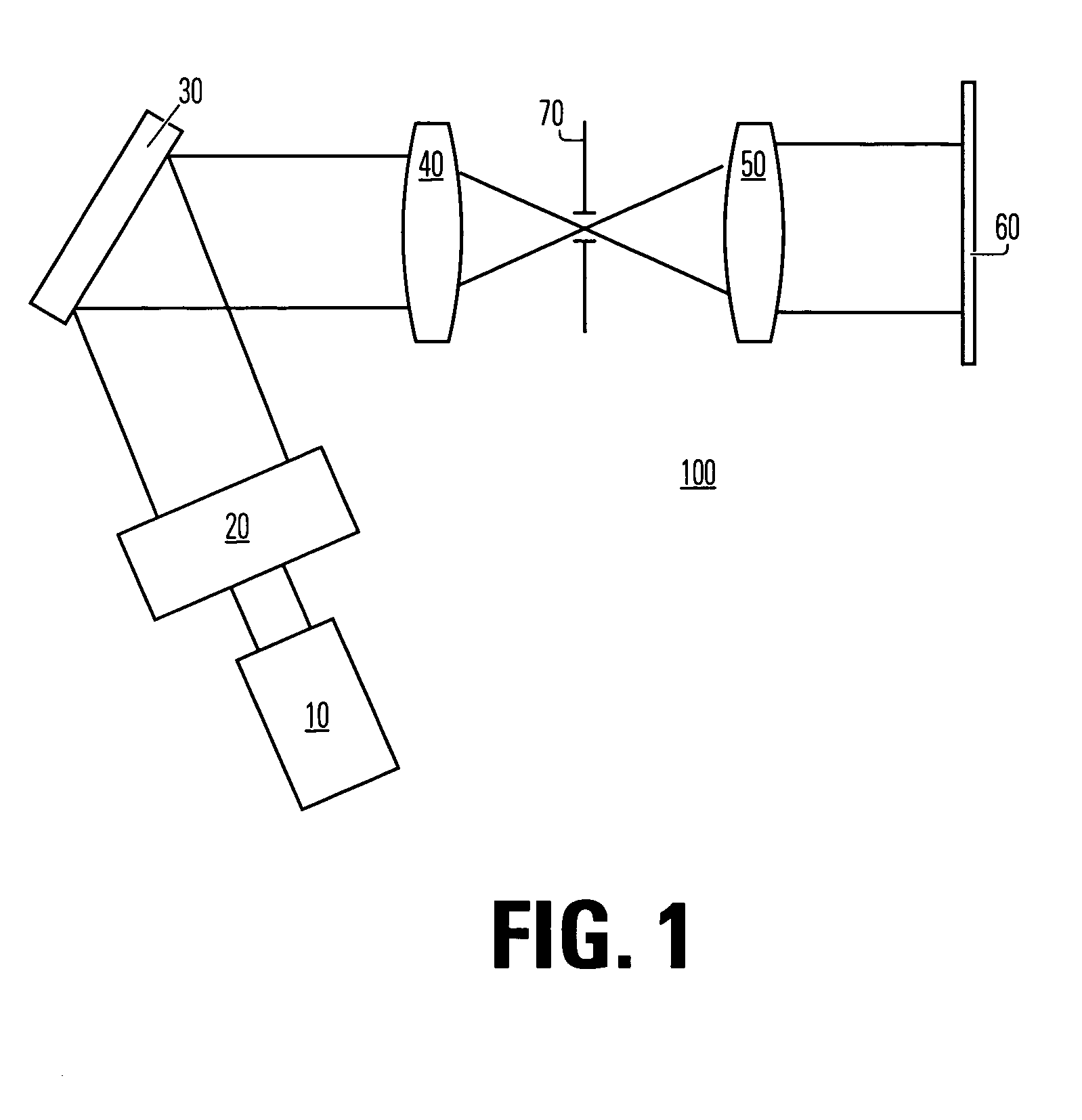Method and device for immersion lithography
- Summary
- Abstract
- Description
- Claims
- Application Information
AI Technical Summary
Benefits of technology
Problems solved by technology
Method used
Image
Examples
Embodiment Construction
[0014]FIG. 1 illustrates an embodiment of an apparatus 100 for patterning a work piece 60 according to prior art, into which the present invention could easily be inserted.
[0015] Said apparatus 100 comprising a source 10 for emitting electromagnetic radiation, an objective lens arrangement 50, a computer-controlled reticle 30, a beam conditioning arrangement 20, a spatial filter 70 in a fourier plane, a Fourier lens arrangement 40 and said work piece 60.
[0016] The source 10 may emit radiation in the range of wavelengths from infrared (IR), which is defined as 780 nm up to about 20 μm, to extreme ultraviolet (EUV), which in this application is defined as the range from 100 nm and down as far as the radiation is possible to be treated as electromagnetic radiation, i.e. reflected and focused by optical components. The source 10 emits radiation either pulsed or continuously. The emitted radiation from the continuous radiation source 10 can be formed into a pulsed radiation by means of...
PUM
 Login to View More
Login to View More Abstract
Description
Claims
Application Information
 Login to View More
Login to View More - R&D
- Intellectual Property
- Life Sciences
- Materials
- Tech Scout
- Unparalleled Data Quality
- Higher Quality Content
- 60% Fewer Hallucinations
Browse by: Latest US Patents, China's latest patents, Technical Efficacy Thesaurus, Application Domain, Technology Topic, Popular Technical Reports.
© 2025 PatSnap. All rights reserved.Legal|Privacy policy|Modern Slavery Act Transparency Statement|Sitemap|About US| Contact US: help@patsnap.com



